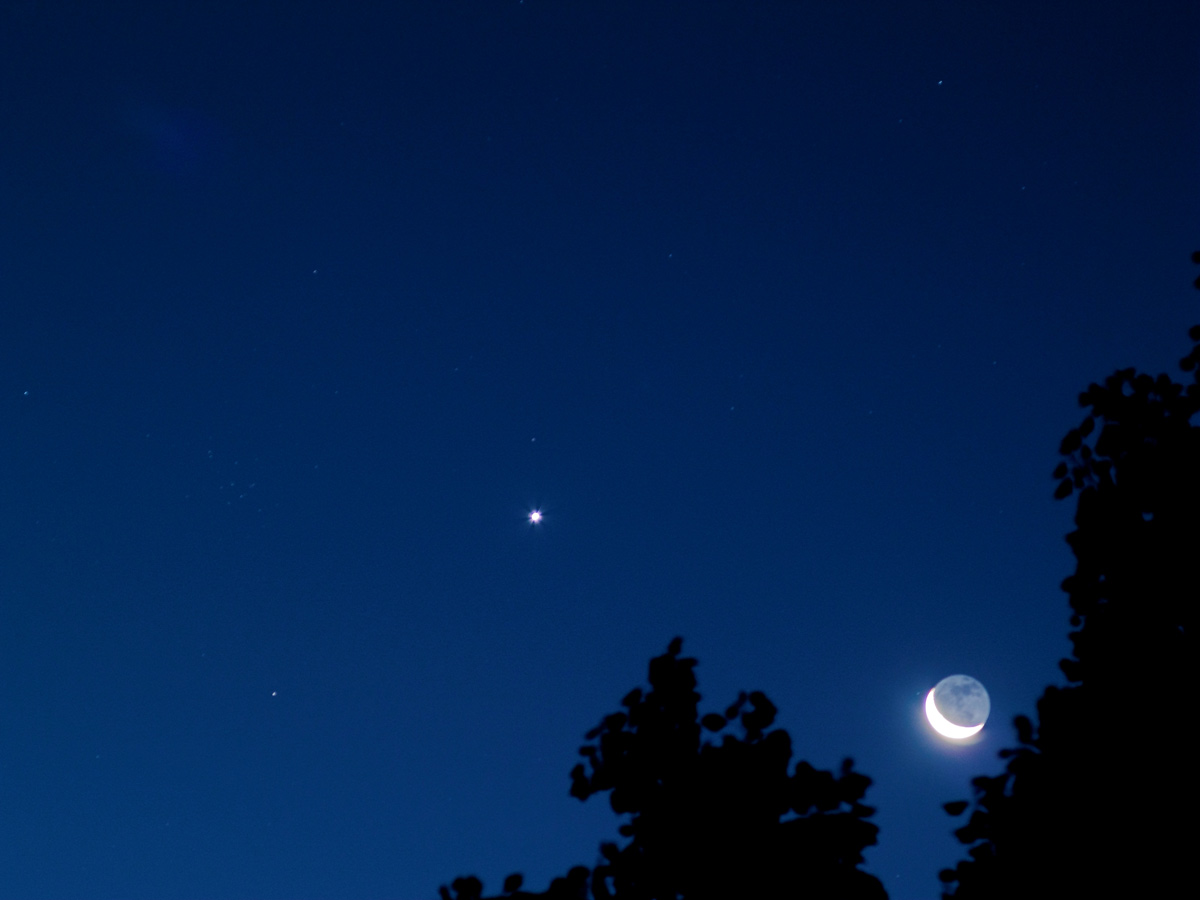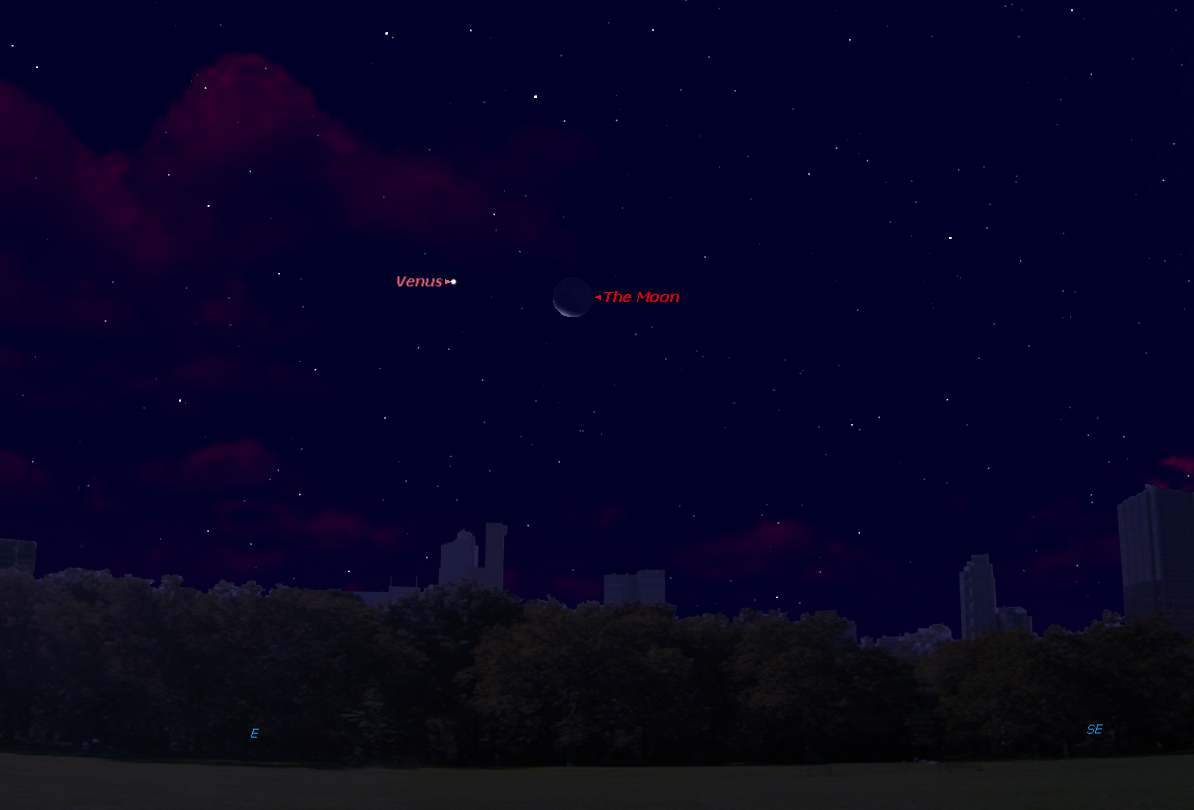
With daylight saving time still in effect across most of the United States and Canada, the sun is now rising at many localities after 7 a.m. local time. That means dawn is coming late, so a lot of people may head out to work or school these days under a fairly dark sky.
On Friday morning (Oct. 12), early risers will be in for a treat as the two brightest objects in the night sky approach each other to make for a lovely celestial scene — something to admire while you're perhaps waiting for the bus or train.

Looking low toward the east-northeast beginning around 4 a.m. local time, you'll see a narrow waning crescent moon, just 12-percent illuminated. Situated about 7 degrees above and to its left will be the brilliant planet Venus. (Your clenched fist extended at arm's length measures roughly 10 degrees across).
By the time sunrise comes about three hours later, this eye-catching pair will appear about one-third of the way up from the southeast horizon to the point directly overhead (the zenith). [Amazing Photos of Venus, the Moon and More]
Keep in mind that when you’re looking at the moon, it lies some 232,000 miles (374,000 kilometers) from Earth. Meanwhile, Venus is more than 450 times farther away from us, at a distance of 105 million miles (169 million km).
Here's a question you might want to ponder early Friday as you gaze at the celestial duo: Which is the brighter of the two?
At first glance you might think it's Venus, which gleams with a sharp and steady silvery light. In fact, in very dark locations, this beacon of the night can cast a faint but distinct shadow. At magnitude -4.1, Venus currently shines 11 times more brilliantly than Sirius, the brightest star. (In astronomy, lower magnitudes signify relatively more luminous objects.)
Get the Space.com Newsletter
Breaking space news, the latest updates on rocket launches, skywatching events and more!
But the planet still doesn't outshine the slender sliver of a moon, which will be just three days from its new phase.
In fact, the moon is more than 27 times brighter than Venus. The reason this may be difficult to believe is that, whereas all of Venus' light is condensed into a dot in the sky, the light of the moon is spread out over a much larger area.
Keep your eyes on the moon and Venus as the sky lightens up. After sunrise Friday, you'll still be able to see the moon easily. And using Earth's nearest neighbor as your benchmark, you should also have little trouble spotting Venus, which will appear as a tiny white speck against the blue daytime sky. See how long you can follow them through the course of the day.
Editor's note: If you snap an amazing photo of Venus and the moon that you'd like to share for a possible story or image gallery, please contact managing editor Tariq Malik at tmalik@space.com.
Joe Rao serves as an instructor and guest lecturer at New York's Hayden Planetarium. He writes about astronomy for The New York Times and other publications, and he is also an on-camera meteorologist for News 12 Westchester, New York.
Join our Space Forums to keep talking space on the latest missions, night sky and more! And if you have a news tip, correction or comment, let us know at: community@space.com.

Joe Rao is Space.com's skywatching columnist, as well as a veteran meteorologist and eclipse chaser who also serves as an instructor and guest lecturer at New York's Hayden Planetarium. He writes about astronomy for Natural History magazine, Sky & Telescope and other publications. Joe is an 8-time Emmy-nominated meteorologist who served the Putnam Valley region of New York for over 21 years. You can find him on Twitter and YouTube tracking lunar and solar eclipses, meteor showers and more. To find out Joe's latest project, visit him on Twitter.









